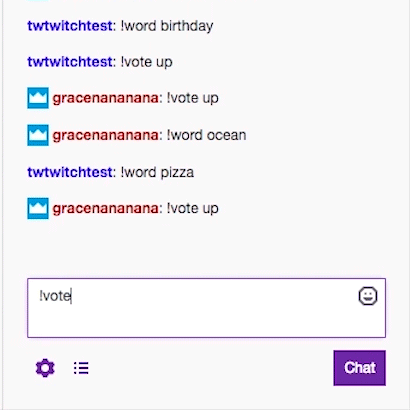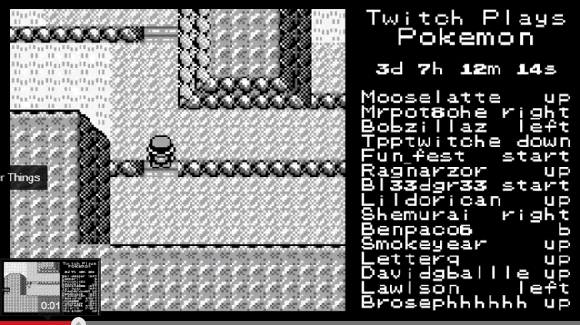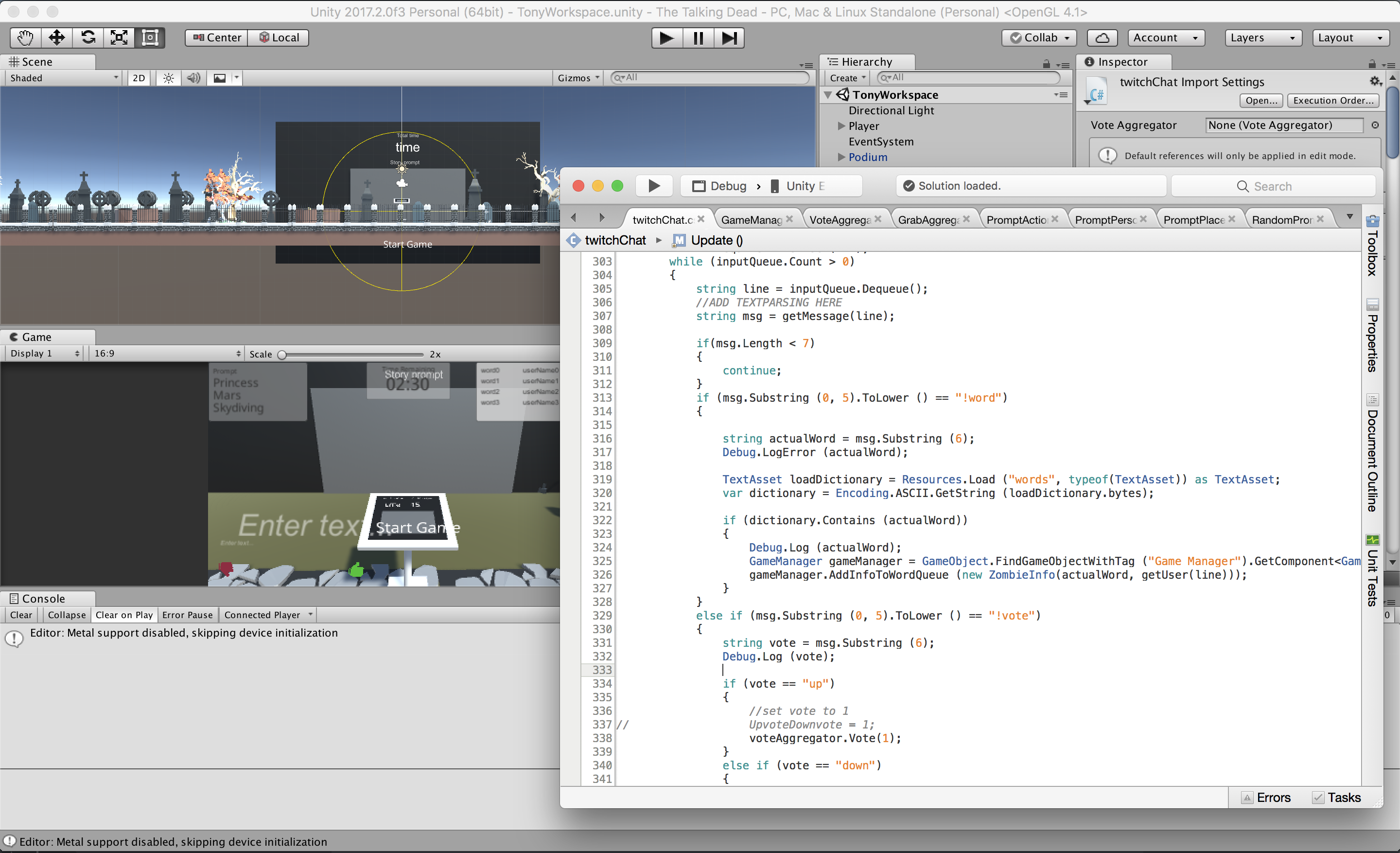Twitch.tv is one of the world's largest online communities. Over 2 million broadcasters stream on Twitch with a majority of the content focusing on games. Inspired by a number of cool events on Twitch like Twitch Plays Pokemon, I teamed up with four other graduate students to prototype an experience that doesn't yet exist in popular form.
Our group knew we wanted to connect streamers and viewers. After brainstorming a number of ideas ranging from idle games to an online version of mafia, we settled on a simple but powerful concept: developing a game that streamers can use to practice speaking on air.
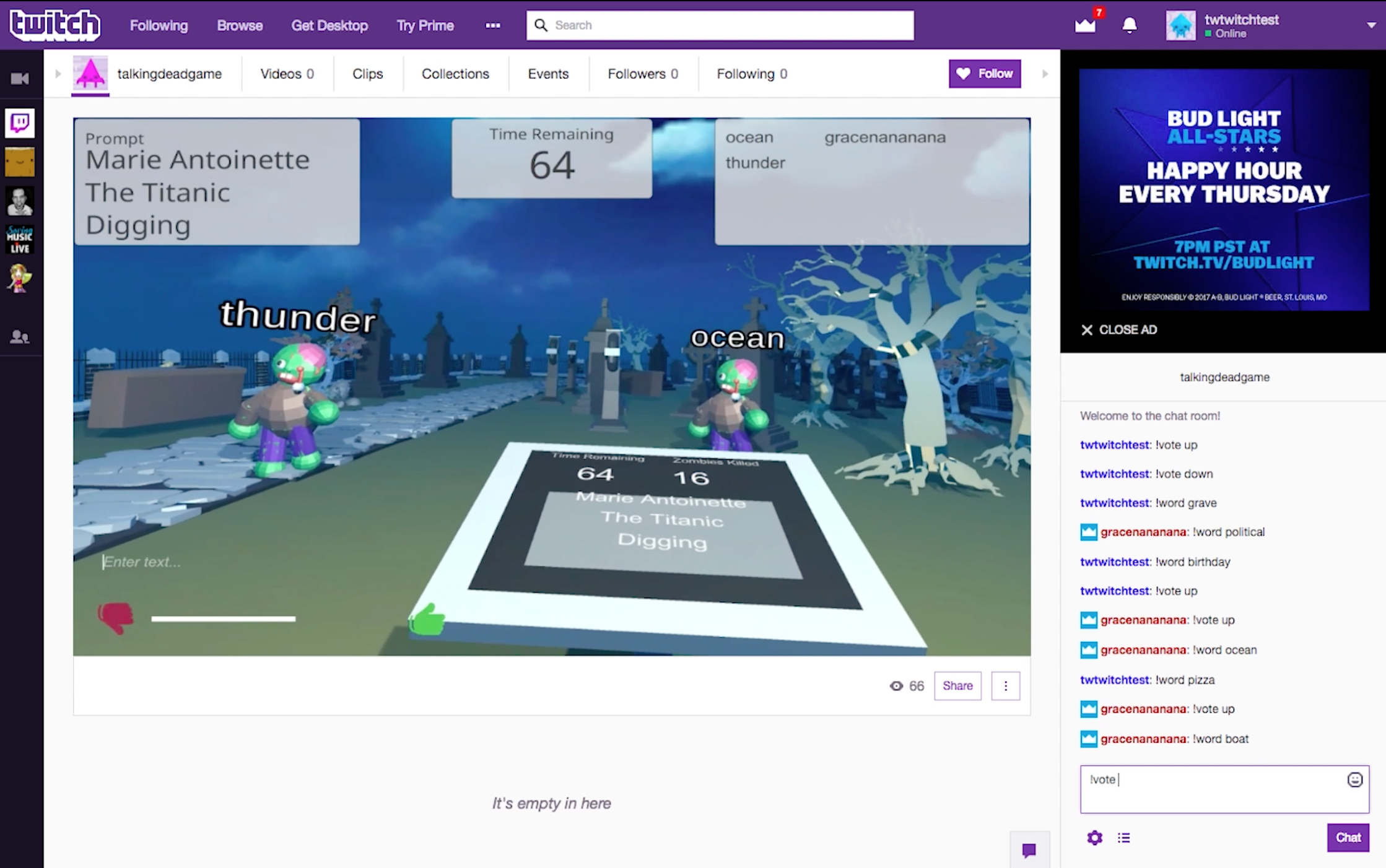
A live stream of our prototype showing both the player's view in the center of the screen and the chat on the right-side column.
We started our process focusing on two core themes: facilitating streamer-viewer interactions and using game design to make streaming in front of others feel like more of a game. A teammate came up with an inspiring idea to help new streamers feel less nervous speaking in front of an audience. From this, we knew we had the core concept for our game.
Trailblazers in gaming like SEGA's Typing of the Dead and Twitch.tv's Twitch Plays Pokemon phenomenon became inspiration for our project. No one had seemed to put all of these different themes together, so we decided to challenge ourselves to create something totally new. Thus, The Talking Dead was born.
As we debated the complex mechanisms a game would need in order to be fun and helpful to budding streamers, we realized that the most natural way for viewers to communicate with a streamer is through Twitch chat. Combined with the challenge of asymmetric gameplay, we would have to allow viewers to interact with the game through chat. Ultimately, we settled on the idea of having a player speaking into the game to destroy zombies sent by viewers typing commands.
Before building anything though, our team knew we needed to test the game concept first to get a feel for the gameplay. Experience prototyping, in which we had testers play reproduce the actions of the player and zombies in reality, provided valuable feedback on our concept.
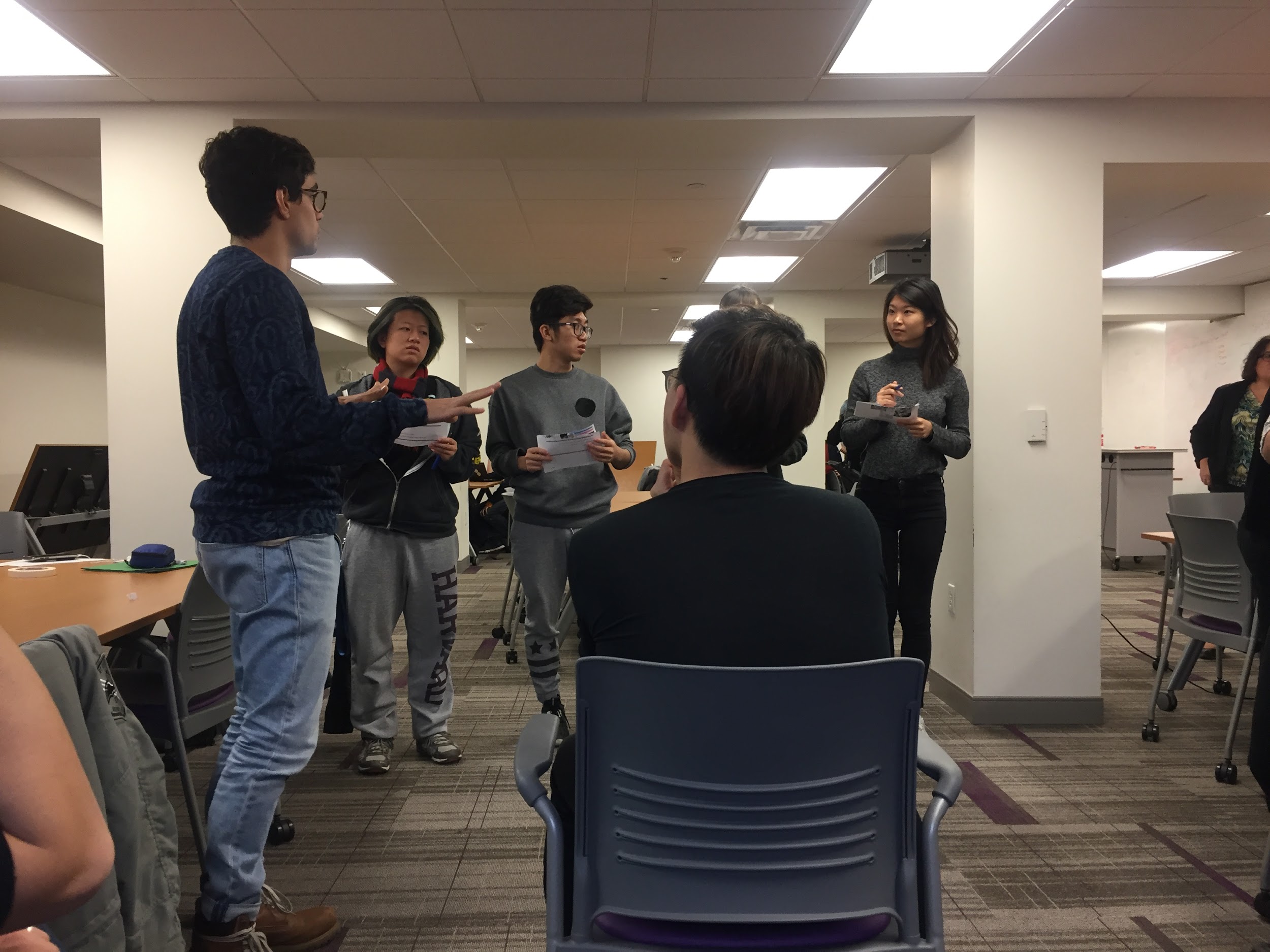
We had four players play zombies while one more player told a story.
Our playtest revealed the following:
Good
- The game was fun for our storytellers.
Meh
- Storytellers found the game harder when the zombies moved fast.
- Some zombie players wanted to troll the game.
Bad
- Storytellers found it hard to simply tell a story without any scaffolding.
- Zombie players felt that they didn't have enough agency.
To make sure our game design would be able to accommodate some of the gameplay imbalances we found, our team gathered to debate the game mechanics. We integrated a number of new mechanics in our final design directly based on feedback from our experience prototype such as a word queue to prevent spamming, a performance aggregator to modify zombie speed, and a prompt for storytellers.

Our final design document illustrated using feedback loops.
While our tech lead built out the core game components and our artists built UI elements, I developed the chatbot for connecting with the Twitch client using Twitch's API. Written in C#, the chatbot possesses several features critical to the chat players' experiences.
Players can use the command !word to feed a word into the word queue, and !vote up or !vote down to provide performance feedback into the aggregator. To prevent abuse, both word queue and aggregator have built-in mechanisms against spam. The word queue also checks for non-sense or inappropriate words against an internal dictionary.
